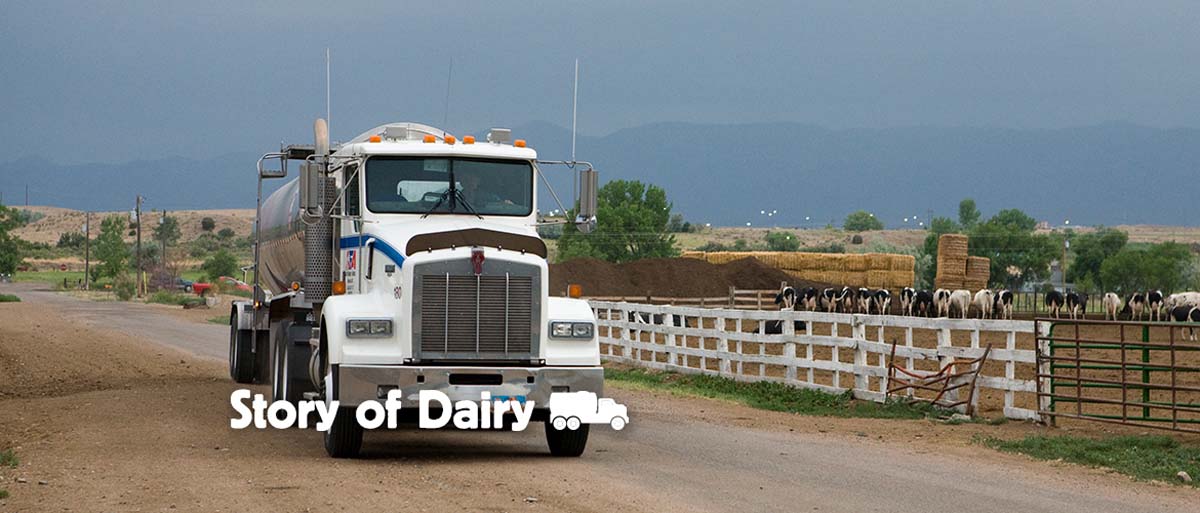Our third stop in the journey of milk from the farm to the table is milk transportation from farm to plant and plant to store.
On the dairy farm, equipment pumps milk directly from the milking cows to a refrigerated storage tank, where it is quickly cooled to preserve freshness and safety. It is important to note that milk never touches human hands, which is just the beginning of the many food safety measures in place to protect your milk from farm to fridge.
Fresh milk is driven from the dairy farm to a local dairy processing plant in an insulated, sealed tanker truck. You’ve probably seen one on the highway – it is like a giant thermos on wheels. Some farmers produce enough milk on their farm to fill an entire tanker truck (or more!) with their farm’s milk. Other tanker trucks may stop at multiple farms to fill up prior to heading to the processing plant.
Not only are these trucks routed by computer programs to take the most efficient routes between dairy farms, they also communicate directly with dairy farmers (or even their computers) to determine when the bulk tank is full of milk and ready to be emptied. This helps minimize trips to the dairy and contributes to lower carbon emissions.
Every tanker load of milk is tested for antibiotics both on the farm (prior to leaving) and at the processing plant (prior to being unloaded from the tanker truck). In the extremely rare event that milk tests positive for antibiotics, it is disposed of immediately and never reaches the public. Not to mention that the farmer is financially liable if antibiotics are found in their milk. Read more about how antibiotics are used on dairy farms here.
“Keep it clean, keep it cold, keep it moving” is the dairy supply chain’s mantra, and it shows just how much every person along the journey values the safety of your milk. Because of milk’s perishability, milk moves quickly from farm to table. For 80% of Colorado’s milk, the journey from farm to plant is 40 miles or less, and in most instances, the milk you buy in your grocery store was likely harvested on a farm less than two days prior. Now that’s local!
Have specific questions about milk production and milk safety? Please send us a message on Facebook or email info@dairymax.org.




